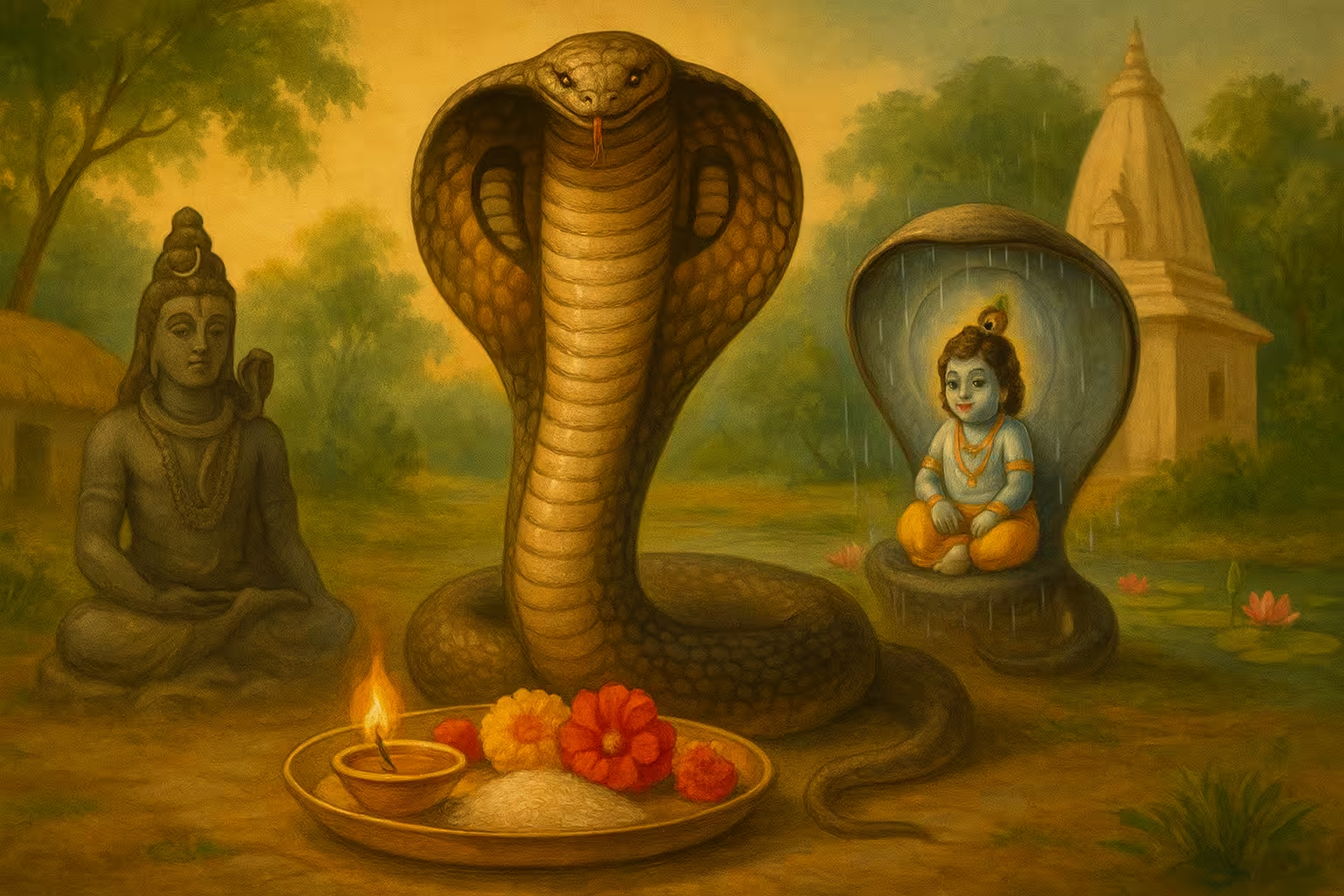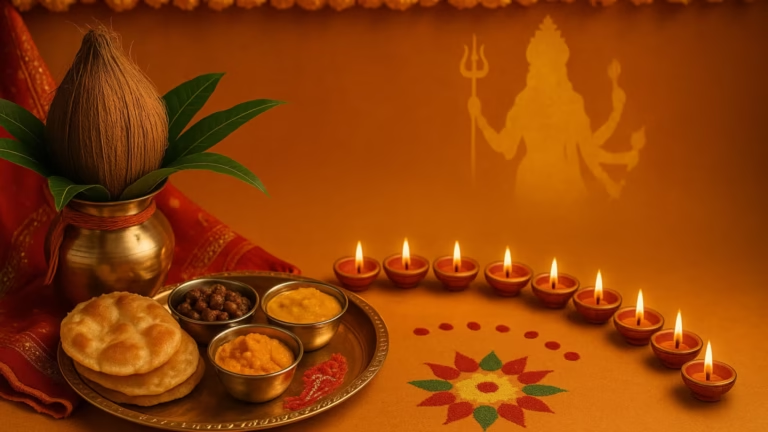
Table of Contents
Nag Panchami
Nag Panchami is one of those Indian traditions where nature, faith, and consciousness converge. This festival is associated with the worship of serpents, but its meaning runs much deeper. Observed annually on the fifth day (Panchami) of the Shukla Paksha in the month of Shravan, it reminds us of the importance of respect and balance with every being in creation — whether human or serpent.
Why Are Snake Deities Worshipped on Nag Panchami?
The worship of snakes on Nag Panchami holds religious, social, and environmental importance. According to Hindu scriptures, snakes are regarded as representations of divine powers and are directly associated with many deities. In rural life, the presence of snakes is common, and harming them is considered inauspicious. On this day, people offer milk, flowers, and rice to serpents as a mark of reverence. This act of worship expresses coexistence with snakes, reverence for nature, and the affirmation of religious beliefs.
Role of Snakes in Hindu Scriptures
In Hindu religious texts, snakes are not merely symbols of fear, death, or danger, but are also linked to cosmic structure and the protection of dharma. Their presence is found across many important scriptures:
- Sheshnag: Also known as “Anant,” Sheshnag is believed to support the entire earth and maintain the balance of the cosmos with his steady presence. Lord Vishnu is depicted resting in yogic slumber on Sheshnag in the ocean of milk (Kshir Sagar).
- Vasuki Nag: Vasuki played a key role during the churning of the cosmic ocean (Samudra Manthan). The gods and demons used Mount Mandara as the churning rod and Vasuki as the rope. This event shows that snakes have been not only revered but also active participants in cosmic duties.
- Takshak Nag: Takshak is mentioned in the Mahabharata and the Bhagavata Purana. He was responsible for biting King Parikshit as a punishment for his wrongdoing. This story reflects how disrespecting dharma can have serious consequences and establishes the role of snake deities as enforcers of divine justice.
- Vasuki Around Shiva’s Neck: According to Hindu texts, the serpent seen around Lord Shiva’s neck is Vasuki. During Samudra Manthan, when the deadly poison (Halahala) emerged, Lord Shiva voluntarily decided to consume it. To protect creation, he held the poison in his throat, turning it blue, earning him the title ‘Neelkanth.’
- Presence of Sheshnag at Krishna’s Birth: According to a story in the Shrimad Bhagavatam, when Lord Krishna was born, his father Vasudeva was carrying him from Mathura to Gokul during a stormy night. As the Yamuna river swelled and heavy rain fell, Sheshnag appeared and spread his hoods over Vasudeva and infant Krishna, shielding them from the rain and danger.
Importance of Nag Panchami in Rural India and Traditional Attitudes Toward Snakes
Nag Panchami also holds practical relevance in rural India. In villages and agricultural areas, people do not harm snakes. Instead, they offer milk and food grains as a gesture of respect. This worship:
- Represents environmental conservation,
- Reflects traditional practices in maintaining agricultural balance, and
- Reinforces the idea of coexistence with serpents.
Spiritual Perspective on Nag Panchami
In yogic philosophy, ‘Kundalini’ is described as a coiled serpent residing at the base of the spine. When awakened, this energy rises and leads a person toward self-realization. Nag Panchami is a day dedicated to reverence toward this inner energy.
Religious Beliefs and the Purpose of Worship
Nag Panchami is not just a traditional ritual — it holds deep religious significance.
- Remedy for Kaal Sarp Dosh: Those with this astrological condition in their birth chart perform special worship on this day for relief.
- Connection to Ancestors: In some beliefs, snakes are linked to the realm of ancestors (Pitrulok), making this day important for ancestral peace.
- Association with Lord Shiva: Snake deities are considered adornments of Lord Shiva, making this day closely related to Shiva devotion.
Vedic Mantra:
“Om Namah Sarpebhyah Ye Ke Cha Prithivyam Sthitah. Ye Antarikshay Ye Divi Tebhyah Sarpebhyah Namah.”
Meaning: Salutations to all serpents residing on earth, in the skies, and in the heavens.
Conclusion
Nag Panchami teaches us that what we fear can also be understood and respected. Worshipping snakes is an acknowledgment that balance in life requires recognizing the importance of all creatures.
This festival does not preach fear, but encourages understanding and reverence. The worship of serpent deities reflects the belief that dharma is not just about worshiping God, but also about fulfilling responsibilities toward every living being.


